How to make gluten-free sourdough starter from scratch using gluten-free flour. Making your own sourdough starter is easier than you’d think! And yes, it works with gluten-free flour!
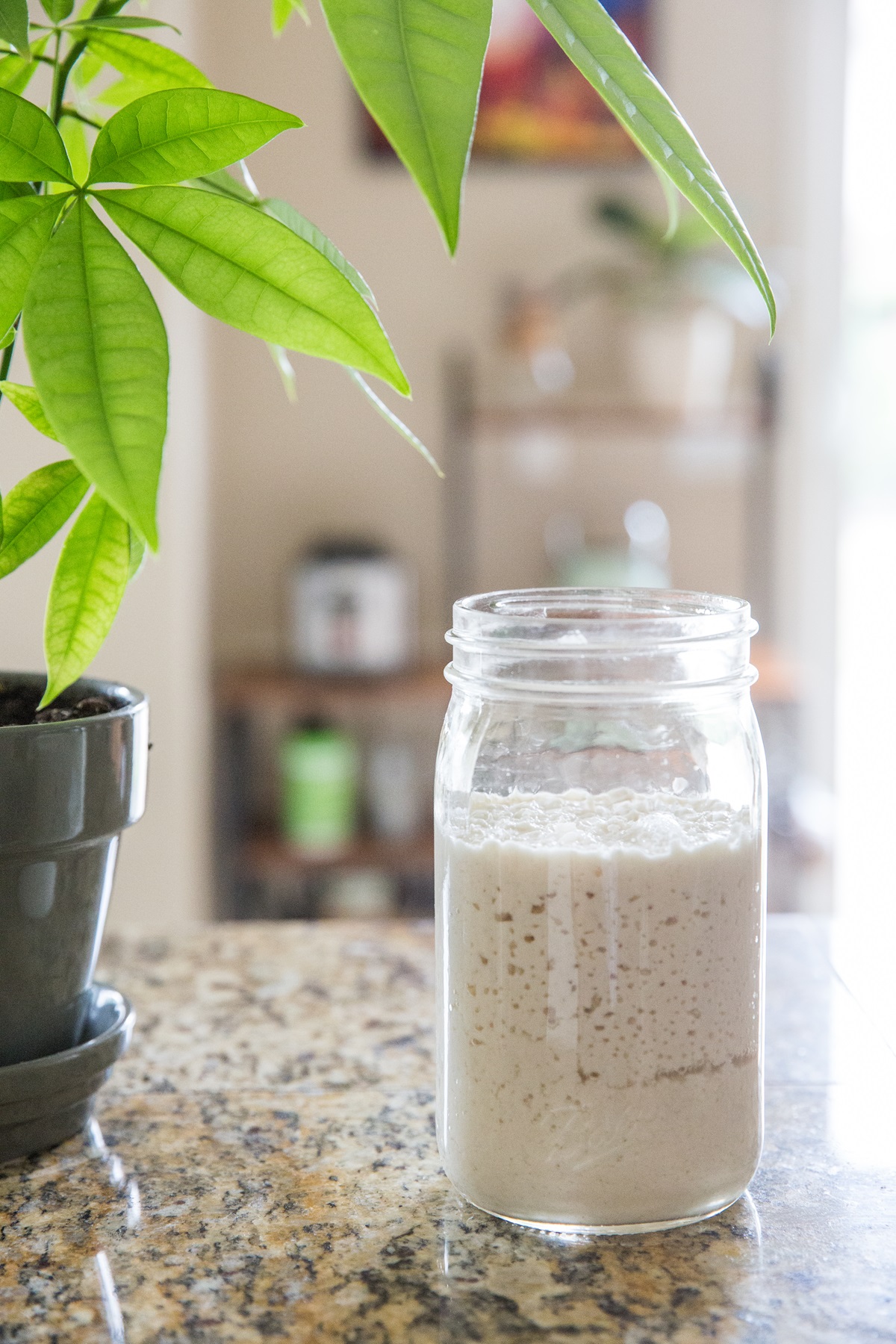
Oh hey!
Want to dive into the lovely land of sourdough but don’t know where to begin??
This post has you covered!
It is true that regular sourdough bread is lighter in gluten than regular (non-sourdough) bread, but those who are sensitive may still react to it, and those who are allergic should most definitely steer clear.
Thankfully, we can make sourdough starter using a store-bought gluten-free flour blend. Yes, it really does work!
If you have been a long-time follower, you may know I’m a bit of a geek when it comes to fermentation. I published a cookbook in 2015 focusing entirely on fermented beverages, called Delicious Probiotic Drinks.
It had been many moons since I started a new fermentation experiment, so once I decided to make my own gluten-free sourdough starter, I felt childlike elation. 😀
This post can be used as a guide to make your own gluten-free sourdough starter, know when it is ready to use, how to use it, and how to store it. I hope you find it helpful!
First things first, let’s discuss everything you need to make sourdough starter.
What you Need to Make Gluten-Free Sourdough Starter
Large Bowl or Jar – Choose a vessel that will allow your starter to grow up to 3 or 4 times its volume. Note that after feeding your starter every day, it will always grow. Keep this in mind when choosing the vessel in which your starter will live.
Quart sized wide-mouth mason jars are a great option.
I started in a mixing bowl and am currently using a large glass measuring cup. If possible, stick with the same vessel so as not to disrupt the fermentation process.
Gluten-Free Flour Blend – I use Bob’s Red Mill 1-to-1 Gluten-Free Baking Flour (not sponsored), but from what I have read, King Arthur’s Measure for Measure Gluten-Free Flour works well too.
DO NOTE! The amount of water you use may vary depending upon the flour you use. This is the only tricky part about making your starter (keep reading!).
For consistent results, avoid switching flours while you’re making your starter. Stick with the same flour so you don’t disrupt the microbiome of the starter – it will be fragile at first!
Water – that’s it. Just water. I use filtered water from my Berkey filter, and I do recommend using filtered water if at all possible.
Kitchen Towel – Use a kitchen towel or cheesecloth to cover the vessel you’re using to make the starter. This keeps any bugs out and also protects the starter from too much light (a little light is fine, but you don’t want to cook it with UV rays, know what I mean?
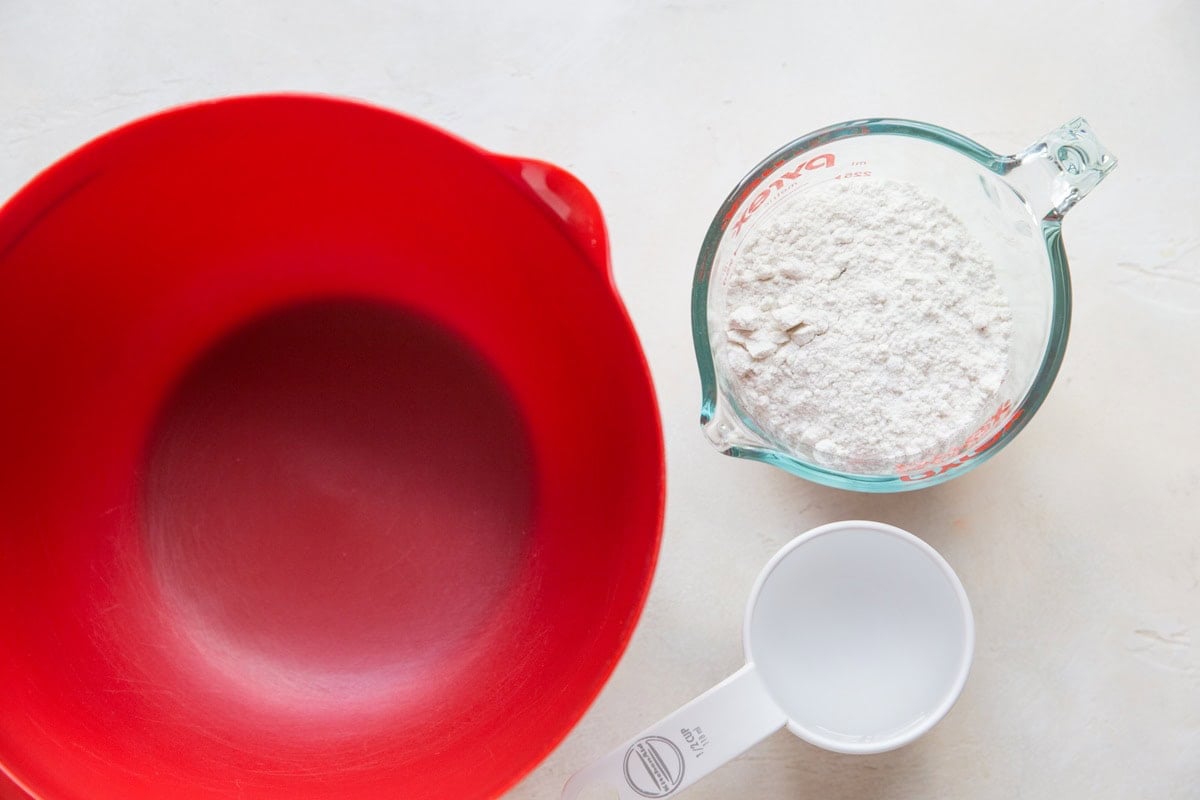
How to Make Gluten-Free Sourdough Starter:
Day 1: Combine 1 cup of gluten-free flour blend with 1 cup of water and stir well until all the clumps are out. Cover with a kitchen towel, and leave untouched overnight (preferably 18 to 24 hours).
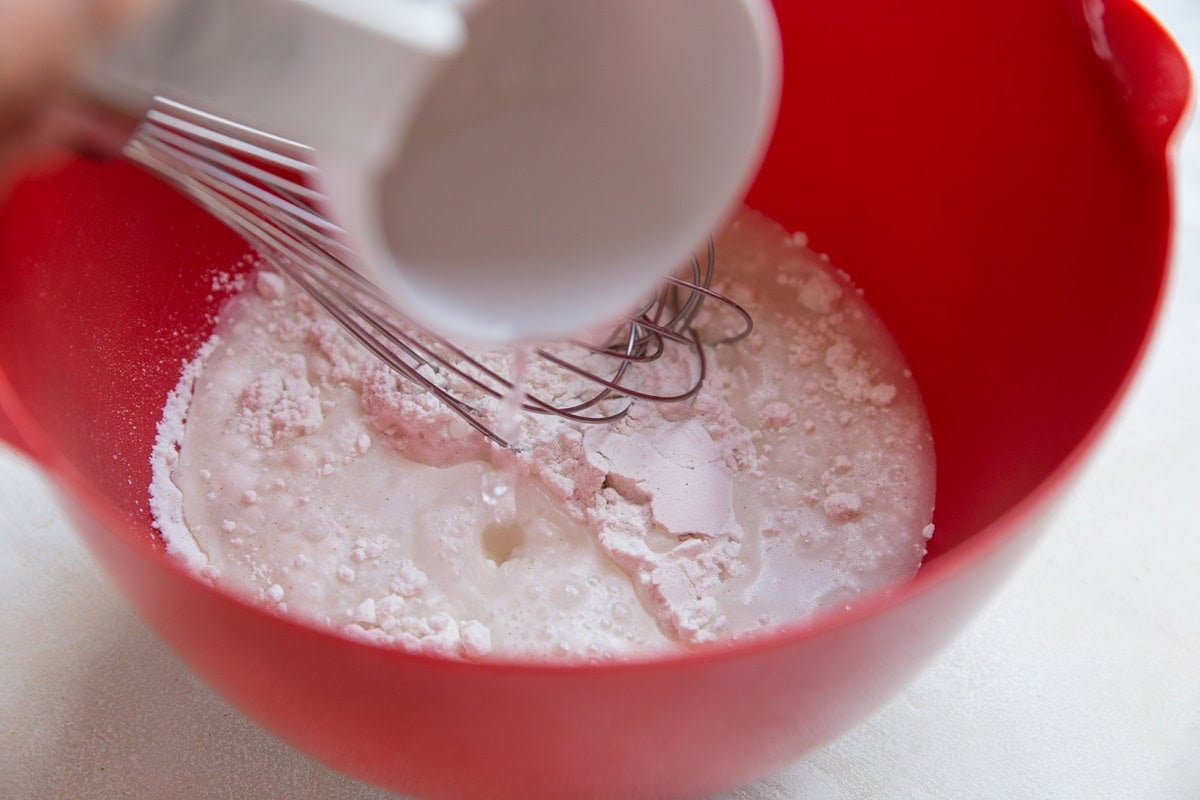
Day 2: Discard half of the starter (yes, throw it in the trash. Or if you don’t want to waste it, you can use it for a baking experiment). Add another 1 cup of flour and 1 cup water. If the starter is very thick like pizza dough, add more water until it is thinner.
You want it to be about the consistency of pancake batter. If it appears too thin, add more flour until that pancake batter-like consistency is reached.
Day 3 – 7 (and beyond): Each day, discard half of the starter and add a 1:1 flour to water ratio. This means you can continue adding 1 cup of flour and 1 cup of water, or you can decrease the measurement to ½ cup flour and ½ cup water.
Keep noting the consistency of the starter and add more or less water to get it to that slightly thick pancake batter consistency.
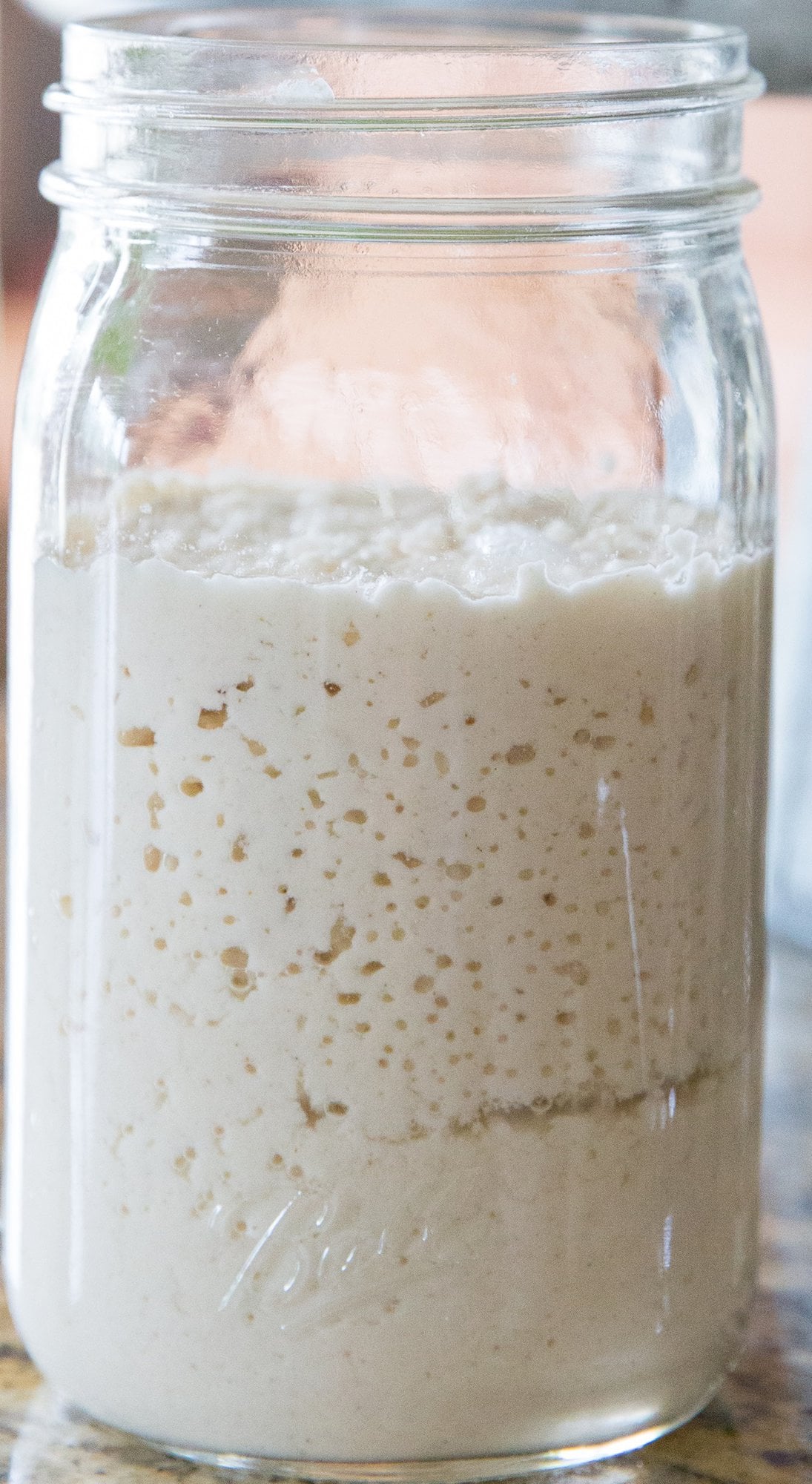
Sourdough Water to Flour Ratio
When using regular all-purpose flour, a 1:1 ratio is recommended to start and then the ratios change over time as your starter matures.
Similar to making regular sourdough starter, I found that I needed a 1 to 1 ratio of gluten-free flour to water, as the flour blend I use has similar absorbency to regular all-purpose flour.
King Arthur’s recipe for gluten-free sourdough starter specifies 1 cup of flour to 1/2 cup + 1 tablespoon of water to start out.
If you’re using King Arthur Measure for Measure Gluten-Free Flour, use that ratio and see where it lands you.
However, if you use Bob’s Red Mill’s 1-to-1 Baking Flour like me, you may need a larger ratio of water to flour.
Do note, humidity and elevation may play a role in your ratio!
Here in Reno, we are technically high elevation and it is dry AF here. It makes sense if you live in similar conditions you’ll need a higher ratio of water to flour than 1:1. If you live in a humid area and/or at sea level, 1:1 may be great!
Again, so long as your starter is the consistency of thick pancake batter, you’re good.
When is the Starter Ready to Use?
You can use your starter as soon as you witness signs of life. This means the starter will have grown 2 to 4 times its original volume and will have lots and lots of bubbles/air pockets.
These air pockets are a signal you have active, living bacteria and yeast and they’re literally breathing and reproducing!
You will also smell a pretty pronounced sour scent! It will smell like bread dough as you walk by your starter – this is another sign it is working!
My sourdough starter was ready to use on Day 4, but I let it go an additional day before putting it to use, just to be sure.
I had read sourdough starters sometimes become very active at the beginning and then seem to die off by day 3. If this is the case for you, don’t fret. Keep proceeding as normal to see if the starter bounces back.
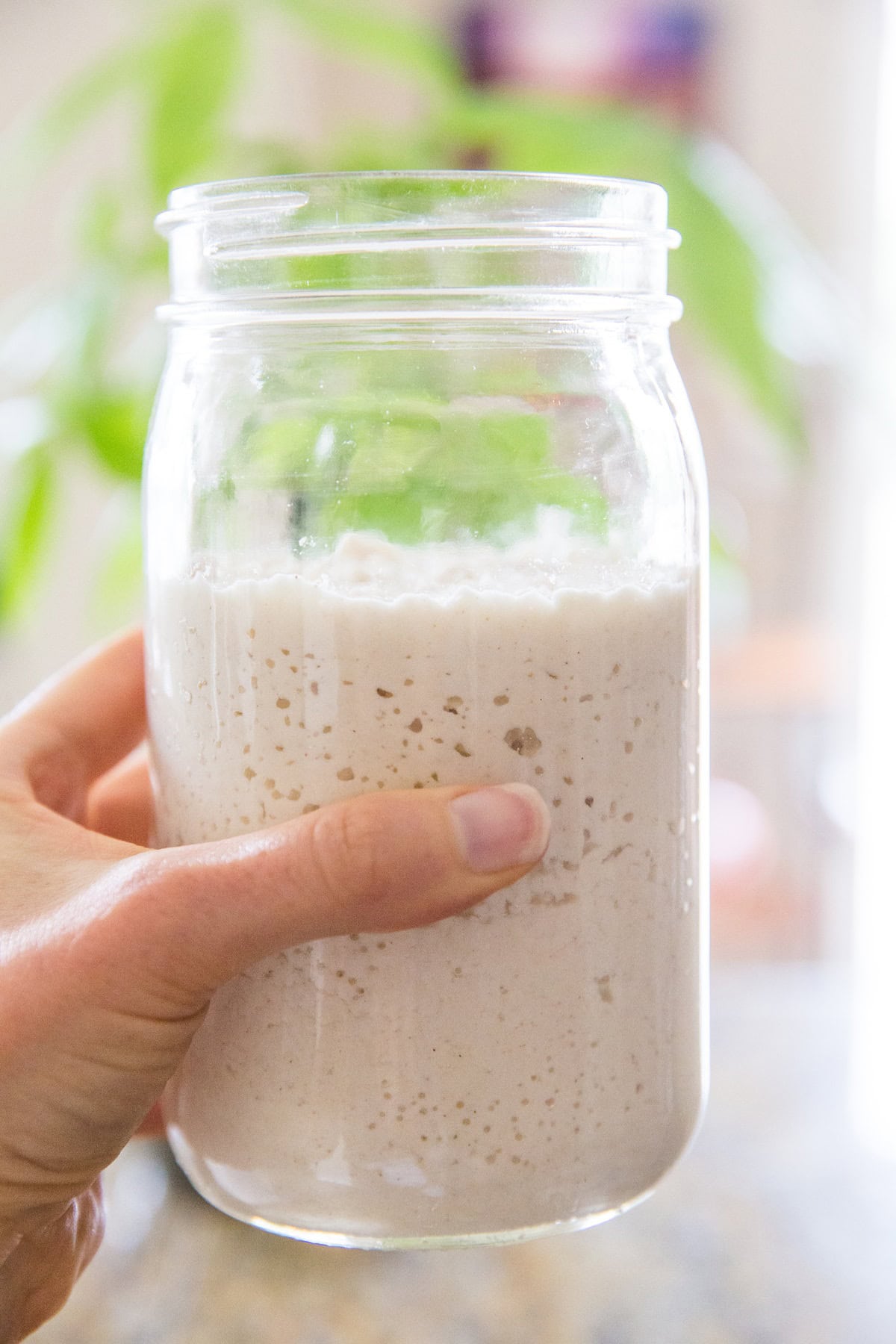
How Fermentation Works:
Across the board, the concept of fermentation is the same, but the inputs vary.
You need bacteria and/or yeast, liquid, and something to feed the bacteria and yeast.
For instance, when making yogurt, the lactose in the milk feeds the Lactobacillus bacteria strains, and the milk also serves as the liquid environment in which the bacteria live and reproduce.
In the case of sourdough starter, the bacteria and yeast are naturally occurring in the air (you may have heard the term, “native yeast.”).
We continuously feed the native yeast flour, which is jam packed with carbohydrate, and give it a nice moist warm environment to thrive.
The reason we continuously feed the culture is to ensure there is plenty of yeast for leavening our sourdough projects.
As long as you’re able to get a starter going, it becomes forgiving in terms of the amount and timing of feedings.
You can also allow the starter to go dormant by transferring it to a sealable container and refrigerating (I’d recommend using a jar with an airtight lid).
Best Household Temperature for Sourdough Starter.
70 to 80 degrees Fahrenheit. Yeast love temps in this range, so if your house stays warm, making a successful sourdough starter will be easy peasy.
Mine has been between 74 and 77, and my starter only took 2 days to show signs of life. By day 4, it was ready to use. If you keep your house cooler, no worries! It could still work, it just may take 5 to 7 days to show signs of life.
When in Doubt, Throw it Out:
If you see any mold at all – pink, white, green, brown, black, throw it out and start over.
There is absolutely no reason to risk it. Note that if you live in a humid area, you may need to keep a very watchful eye over the starter and begin keeping it in the refrigerator after a few days to avoid mold.
How to Use Sourdough Starter:
So you made a starter! Yaaay, congrats! Now what do you do? You have options:
- Use the daily discard in recipes, and continue feeding the starter
- Give some of the starter to family or friends, use starter for sourdough things, continue feeding starter
- Use starter for a while, get sick of sourdough, stick the starter in the refrigerator and allow it to go dormant,
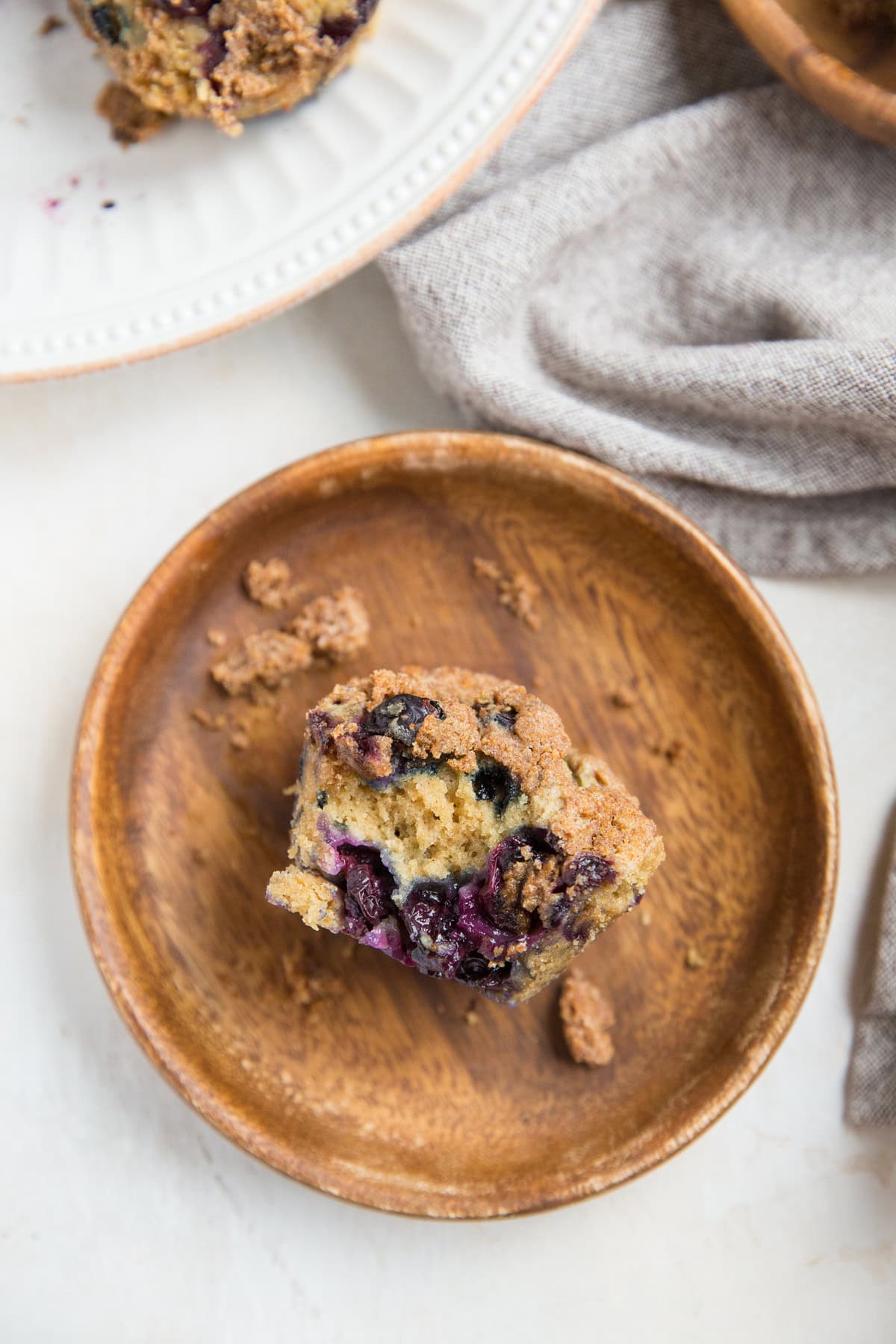
Gluten-Free Sourdough Recipes:
Here are some magnificent recipes using gluten-free sourdough starter!
- Gluten-Free Blueberry Sourdough Muffins
- Fluffy Gluten-Free Sourdough Pancakes
- Gluten-Free Sourdough Chocolate Cake
- Chocolate Chip Sourdough Waffles
- Gluten-Free Sourdough Bread Boule
- Gluten-Free Sourdough Bagels
- Sourdough Almond Flour Waffles
- Vegan Sourdough Banana Bread
How to Store Sourdough Starter:
If you’re continuing to use and feed the starter, just keep it in its original vessel.
When or if you decide it is time to take a hiatus, transfer it to a sealable glass jar and refrigerate until you are ready to start back up. If you’re keeping your starter in the refrigerator, be sure you allow it to come to room temperature before using it in a recipe.
Troubleshooting:
This is above my knowledge and experience, so if you’re having issues, go to A Beautiful Plate’s Sourdough Bread Troubleshooting Guide and FAQ .
But do feel free to drop me questions in the comments section! I’m new to sourdough, but old to fermentation, and am keeping my starter going, so don’t hesitate to ask!
More Fermentation Experiments:
Love fermenting things as much as I do? Check out my recipes for some additional fun!
That’s all for now, folks! I hope you enjoy the process of making sourdough starter as much as I have. Reach out if you have any questions!
What will you do with your sourdough starter??
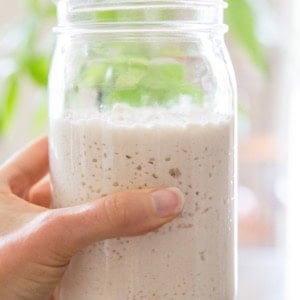
Gluten-Free Sourdough Starter
Ingredients
- 1 cup gluten-free all-purpose flour + more for growing
- 1 cup water + more for growing
Instructions
- Combine 1 cup of gluten-free flour blend with 1 ¼ cups water and stir well until all the clumps are out. Cover with a kitchen towel, and leave untouched overnight (preferably 18 to 24 hours).
- On the second day, discard half of the starter. Add another 1 cup of flour and 1 cup of water. If the starter is very thick like pizza dough, add more water until it is thinner. You want it to be about the consistency of pancake batter. If it is too thin, add more flour (start with 1/4 cup and work up from there).
- Each day, for the next 2 to 5 days, discard half of the starter and add a 1:1 flour to water ratio. This means you can continue adding 1 cup of flour and 1 cup of water, or you can decrease the measurement to ½ cup flour and ½ cup water.
- Keep noting the consistency of the starter and adjust amounts of flour and water as necessary.
- Once your starter shows signs of life (smells like sourdough bread, increases in volume two to fourfold after each feeding and is very bubbly), you can use it in sourdough recipes!
Nutrition
This post contains affiliate links, which means I make a small commission off items you purchase at no additional cost to you.

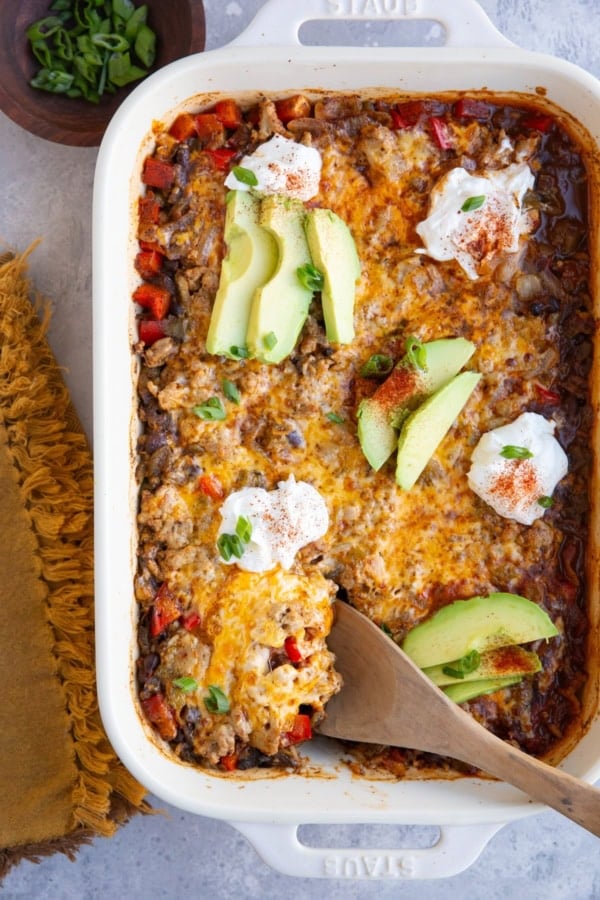












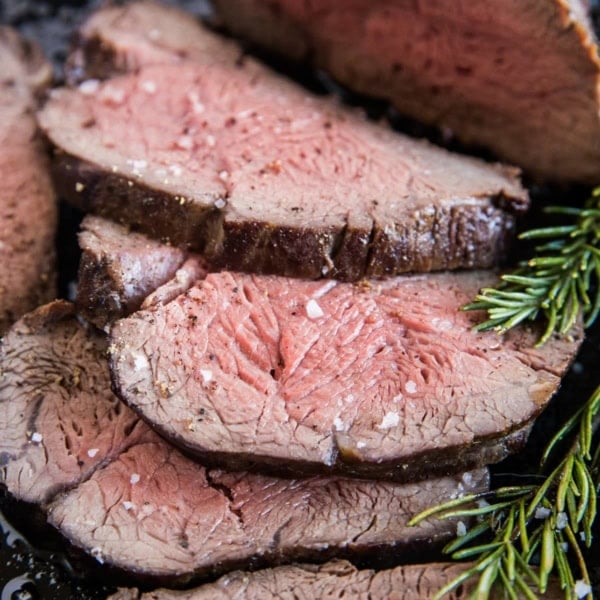
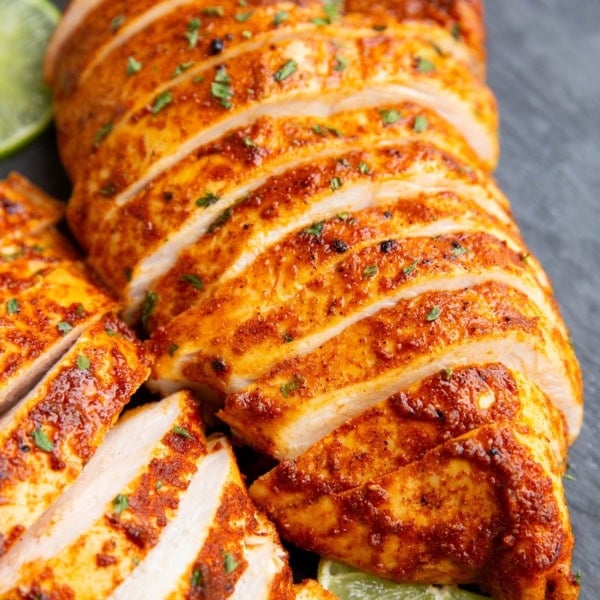

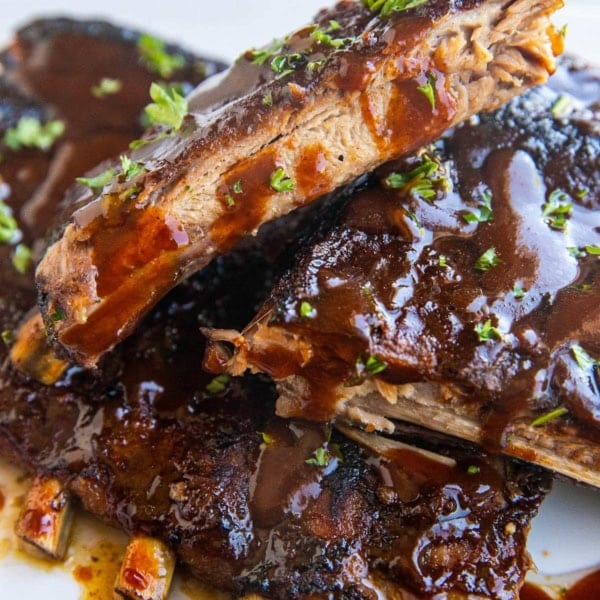

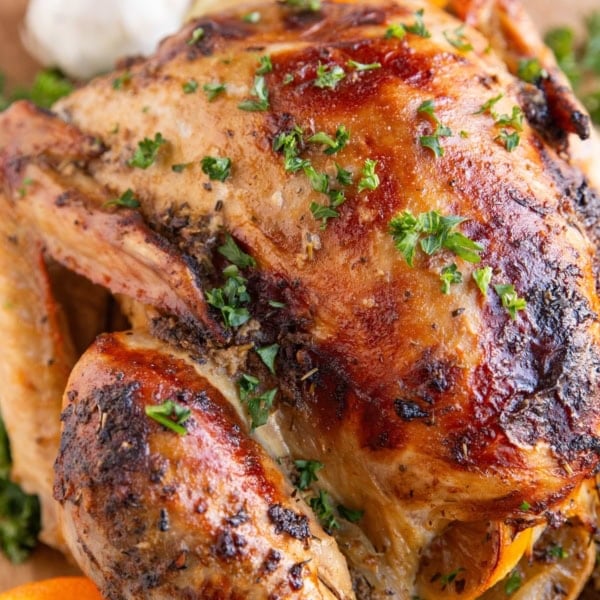
My starter is active, and I’m ready to use it.
If I understand the instructions and comments correctly, I feed it every 2-3 days, while using the starter.
If I don’t want to feed/use every 2-3 days, store it covered in the fridge for up to two weeks. When removing from the fridge, let it get to room temperature before using in. A recipe and restarting the feeding process.
Is that correct?
Hi Michelle,
That’s correct! Some people also have success keeping the starter in the refrigerator for a longer period of time and feeding it every couple of weeks. xo
Hi! This is my first time trying this. How do you make a normal loaf of sourdough bread from the starter?
would gluten free better batter flour work?
Hi Adrianna!
This is the first I had heard of Gluten-Free Better Batter, so I googled it. I have no experience with it, so I can’t be too sure but based on the ingredients list, it is very similar to what I use, so I think it will work fine. Report back with how it turns out, please!
Thanks so much for this! I made my starter and on day three when I went to feed it it was extremely thick. Just curious if it’s normal for it to be thick before feeding and you just thin it out with the current day’s flour/water or if that’s a problem.
Hi Shea!
The starter shouldn’t be overly thick – it should be fairly runny and sticky looking, almost like a thinned down dough. If your starter is thick, you can always add more water. Gluten-free flours vary (sometimes dramatically) in how much water they absorb, so your ratio may not always be 1:1 with the water. Hope this helps! xo
Do you stir the 1:1 and get lumps out before you add it to the starter each day after the discard?
Hi Katie! I stir the water and flour together before adding it to the sourdough starter. Hope you enjoy!
When adding flour and water to mixture each day, should I stir it? Also, my house stays pretty cold in the winter (about 63), can I leave my starter on the counter?
Hi Cortney,
Yes, you’ll want to stir the starter each time you feed it 🙂 It’s tough to say just how quickly the starter will grow at 63, as it prefers much warmer temperatures but that doesn’t mean it’s impossible. If you want to ensure it grows, you can wrap a heat blanket around the jar or just keep it in the warmest place in your house. Hope you enjoy!
@Cortney Hi, my daughter has been making wheat sourdough and just found out she’s allergic to wheat so she’s switching to sourdough. Her house is very cold, 64-66 in winter, so she tried using a seed mat she had on hand and it worked great. She sets her jar of starter on it and sets in on a low heat (3 on her brand) for 24 hours. She does that, resetting the timer to 24 hours every day, until the starter is working. She also sets her glass bowl there to let the dough rise. We’re hoping it works as well on gluten free.
This is super helpful, Sharon! Thanks so much for sharing! xo
I grew up on sourdough buckwheat cakes, another way to work on lowering gluten. Our recipe is from my great grandmother (b c1890) but I am sure it is older than that. We did used some yeast to start it, then used it after at least 12 hours and continued to feed it until it quit working or got pink. I have never tried them with a white flour, so I will be doing these!
Wow, that’s incredible! Amazing how sourdough starters carry so much history with them. Let me know if you have any questions about the GF starter 🙂
Was curious what gf flour you used. I tried the gf bobs 1 to 1 all purpose flour. I am on day 5 with just some bubbles. It smells sour but hasn’t seem to rise that much. Did you use the 1 to 1 flour or a different flour? If a different flour which one? Also should I try feeding my starter twice a day to give it a little boost.
I used King Arthur’s gluten-free flour for the starter. Once it was going and I ran out of King Arthur, I switched to feeding the starter with Bob’s Red Mill’s gf 1-to-1.
@Julia,
I’m using a paleo blend since I need grain free. What kind of yeast should I add to it? Quick rise? Dry yeast?
Hi Chelsie,
My apologies – I have no experience making a grain-free sourdough starter using yeast. I have only made sourdough starter using a gluten-free flour blend and relying upon native yeast, which is the yeast present in air. I would recommend googling a grain-free sourdough starter 🙂 xoxo
Hi. Do you think this would work with almond or casava or tapioca flour? And what about Spelt?
Hi Ursula,
Are you trying to combine all of those flours or just use one at a time? Almond flour won’t work as it doesn’t contain enough carbohydrate for the probiotics and yeast to feed off of. The others would work but you would likely want to make a blend.
My starter smells funky. It has a sourdough smell but also a weirdness to it? Should I restart or is this normal with gluten free flour?
Hi Autumn,
Any time I think something is off with a starter, I pitch it and start over. The good thing about sourdough is it isn’t an enormous time or cost commitment, so you wouldn’t be losing out on much. That said, I would just use your best judgement…it is supposed to smell funky but definitely not foul. xoxoxo
Hi! Love how simple this starter is. Thank you so much for sharing. My question is what do you do with the discard? I guess it just seems like a waste & curious what else you can do with it.
Thanks so much!
Ashley
Hi Ashley! You use the discard in recipes! You can check out my sourdough recipes to put it to use 😀
Once your starter is done, can you use a different flour for the bread? I want to use it to make a whole grain bread with Teff, Sorghum, and Millet.
Hi Connie!
Yes, absolutely! You don’t have to stick with the same flour 🙂 Hope you enjoy!
Starter finally came alive on day 9! San Francisco has cool summers so it took a while. On Day 7 when the starter looks flat, we put it next to a water heater. Voila…air bubbles the next day! We made the blueberry muffin and pancakes with the SD starter and they turned out fluffy and moist! Thanks for the awesome recipes!
Wahooo! It’s crazy how sometimes they take only a couple of days and sometimes much longer. I’m thrilled you were so persistent! Enjoy all your sourdough adventures! xoxox
Do you stir the starter each day before you discard half the amount? On day 4 now and it gets watery at the bottom or top the next day. I tend to need to stir before I discard.
Hi Annie,
Yes, I stir before removing the discard 🙂
Thanks!
once you have created the starter after the 5 – 7 day process – how do you store it in order to use it? Do you need to keep doing the 1:1 ratio and for how long? sorry if too many questions. would really love to learn this!
Hi Stephanie,
After the starter is a week or so old, you can store it in the refrigerator for 2 to 3 weeks if you don’t want to keep it going and allow it to go dormant. Simply feed it, allow it to sit for 1 hour, then seal it up and refrigerate. From what I have read, you shouldn’t let it stay dormant for more than 2 weeks in the fridge, as it will change the composition of the starter and it won’t be as effective for use. I simply keep mine going by leaving it on the counter and using the discard every day. After the starter begins to mature, you can drop the feeding to once every 2-3 days 😀 Let me know if you have any more questions!
@Julia, I’m confused. So after it gets going good, say day 4, you can skip a couple days of feeding it? Or wait longer? Or should I just keep feeding daily?
Hi Nikki,
That’s correct – once the sourdough starter is very active, there is no longer a need to feed it every day if it looks like it’s thriving. However, if you want to be sure it continues being very active, continue feeding it 🙂
Thanks for the share! Your starter looks great!
My pleasure, Emillie! And thank you!! xoxo